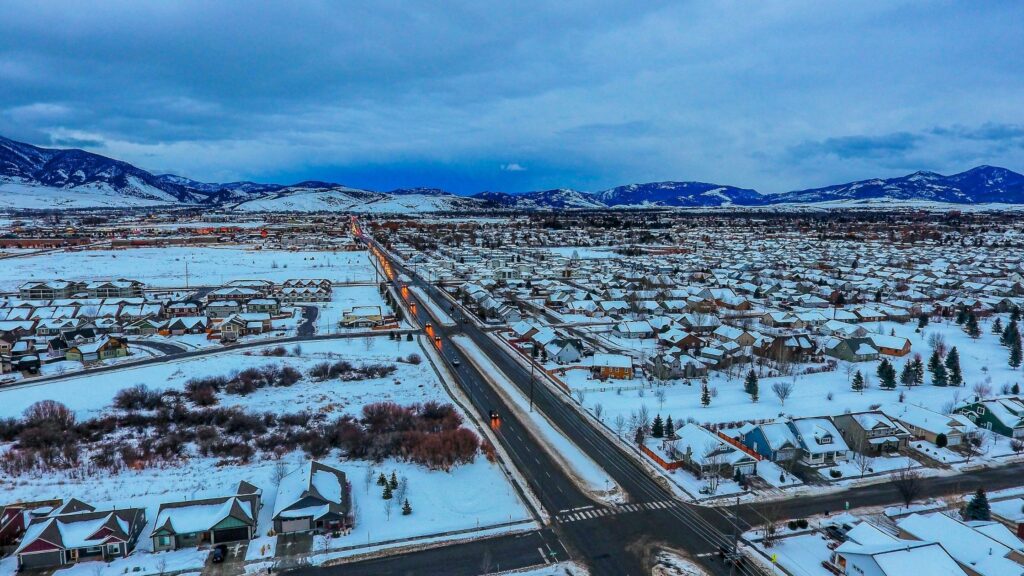From Concept, to Financing, to Construction, the Three-Year Project to Build Montana’s First Open Access Network Forges Ahead at Rapid Pace
(Bozeman, MT…..March 23, 2022) A mere six months after Yellowstone Fiber (then known as Bozeman Fiber) announced it would be building Montana’s first high-speed all-fiber internet network, and the state’s first Open Access FTTH network, construction has officially begun. Crews began laying conduit and will install underground fiber to start connecting the first homes and businesses in Bozeman and Gallatin County to the fastest internet speeds in the nation. The project, envisioned by Greg Metzger and the Board of Yellowstone Fiber, will provide fiber access to every address in the City of Bozeman and begin to extend the network deep into Gallatin County, finally connecting unserved rural areas and ranches, long left behind by internet service providers (ISPs).
“In addition to speed, what we’re bringing residents and businesses is choice. Multiple ISPs use our fiber to compete on our network. This means that customers see faster speeds, better prices, and even better customer service. ISPs get access to new markets quickly. It’s what we value here in Montana because it’s really what the free market is all about,” said Metzger.
In an Open Access model, the infrastructure owner (Yellowstone Fiber) builds and maintains the network, while multiple private-sector ISPs provide services to the end customer. In late 2020, Metzger reached out to Utah-based UTOPIA Fiber, the nation’s largest and most-successful Open Access network, to see if Yellowstone’s concept could have legs. The two entities formed an operational partnership and in December 2021, it was announced that Yellowstone Fiber, a 501(C)(3) nonprofit, had secured $65 million in private funds to build the first phase of the network covering Bozeman City.
“We’re already seeking funding for our next phase, building out into the rest of Gallatin County,” added Metzger. “We’ve heard stories throughout the country of projects like ours taking years to get off the ground. Here, we had an operational partnership and raised $65 million in a year, and began constructing the network less than six months later. When you have the right Board, the right partners, and a supportive community, plans become reality much sooner,” he noted.
Yellowstone Fiber will bring speeds up to 100 Gigabits per second (Gbps) for businesses and 10 Gbps for residential to all its customers. Fiber is considered “future-proof infrastructure” as it lasts for decades and transmits data at the speed of light. As technology and community needs evolve, Yellowstone’s fiber infrastructure can easily adapt.
But broadband speeds have eluded the region for years. Montana remains one of the least-connected states in the nation and about a third of Gallatin County residents lack access. Getting the network built quickly will be a boon to the State’s economy, opening up opportunity in the digital economy—including remote work—and bridging the state’s wide digital divide.
The first six ISPs to provide services on the Yellowstone Fiber network will be:
- Blackfoot
- Global Net
- Hoplite Industries
- Skynet
- TCT (Tri-County Telephone Associates)
- XMission
“In the coming months and pricing and plans will be announced in the spring. Construction is moving at warp speed, which is fitting for a fiber network,” said Metzger.
About Bozeman Fiber
Bozeman Fiber was created in 2015 as the lack of true high-speed broadband was identified by the Bozeman Economic Development Director and the Chamber of Commerce as a missing link to the future growth of existing businesses and innovative new companies, with the accompanying jobs and wages. A group was formed including the City of Bozeman, Gallatin County, the Bozeman School District and business leaders and funded by 8 banks with a CRA- (Community Reinvestment Act) designated loan. This $4,000,000 was used to create the fiber ring connecting anchor tenants (City of Bozeman, Gallatin County and all of the Bozeman School District buildings) and also servicing the Cannery district and downtown Bozeman. Anchor operations began in the fall of 2016, and commercial operations in February 2017.

